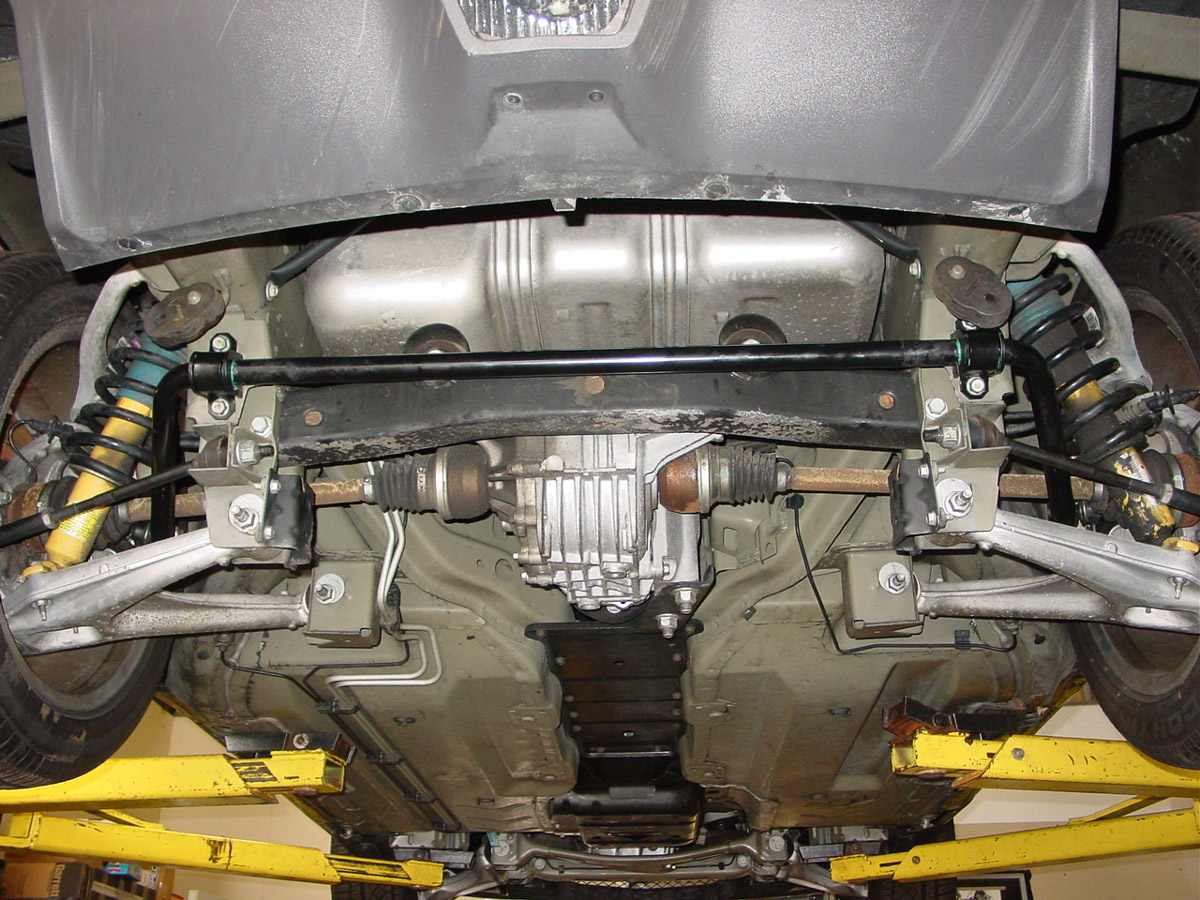Nice to see another person from Colorado. I am from Evergreen so not to far from Denver.
The Kappa chassis can be improved upon, when looking at the design on paper it looks strong. Once you get under the car and really look at the design the thought of "what were they thinking" is going to run through your head. The good thing is the design flaws can be fixed pretty easily.
The largest area of concern is how they decided to attach the lower control arms. The front mounts for the control arms attach to the frame. The rear mounts for the lower control arms attach to a "tower" that is welded to the bottom of the frame. The attachment point is approximately 12" from the frame. GM did put in a cross member between the towers but it is to close to the frame to stop the towers from moving and they do move a lot. they move about 1/8" just from the weight of the vehicle. Once you throw in there the lateral forces pushing in on the bottom of the outside tire when cornering I can only imagine how far it moves. This is where the real issue is. Because the front of the control arm is attach at the frame it is not going to move. so when the back moves into the vehicle you end up with the outside tire moving in a manner that increases the camber and also causes the tire to toe out. The body roll caused by the weight shift causing the suspension on the outside to compress is going to give the car more of a toe in and it will lessen the camber. It is not enough to cancel out the movement of the rear lower control arm mount.
What I did to solve the issue was I ordered a DDM Works Pro Beam and a Werks Racing rear frame brace. While both of these devices do help, they do not stop the problem. The DDM Works pro beam mounts to the bottom of the cross member so it is still to high up. It does have mounting flanges that come down on either side and bolt to where the lower control arm does. there are 4 L shaped brackets but the brackets aren't of sufficient thickness and width to stop the movement. The frame brace helps in keeping the towers parallel to one another, it attaches at the lower control arm mounts (all 4 of them). It has 2 diagonal cross bars. The problem with the design here is that it is made from flat bar. and there is no center support to stop the bars from deflecting.
So what I did was I upgraded the frame brace by adding 1.5" x 1.5" x 1/8" steel L channel to the frame brace. I used 3/8 grade 8 hex cap screws and grade 8 stop nuts every 1.5" or so to bolt the L channel to the frame brace. I also made 2 brackets from 1/4" plate steel that bolts the frame brace to the ProBeam. These brackets are perpendicular to the rear control arm mounts and run up almost the full length of the "towers". The addition of the brackets keeps the towers square to each other and with the modifications to the frame brace the towers are also going to be parallel to each other even during hard cornering.
You can see the design problem really good in this photo.



